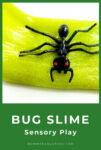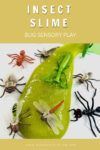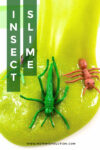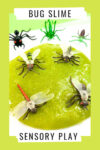Bug Slime
Dive into the fascinating world of insects with an engaging and gooey twist – bug slime!
This entertaining and educational activity allows children to explore the textures and colors of bugs through a slimy, sensory experience.
Mixing creativity with learning, bug slime provides an exciting opportunity for kids to craft their own slime while discovering the intriguing features of various bugs.
Want more sensory ideas? Be sure to check out our other fun sensory activities for kids!
This post contains affiliate links.
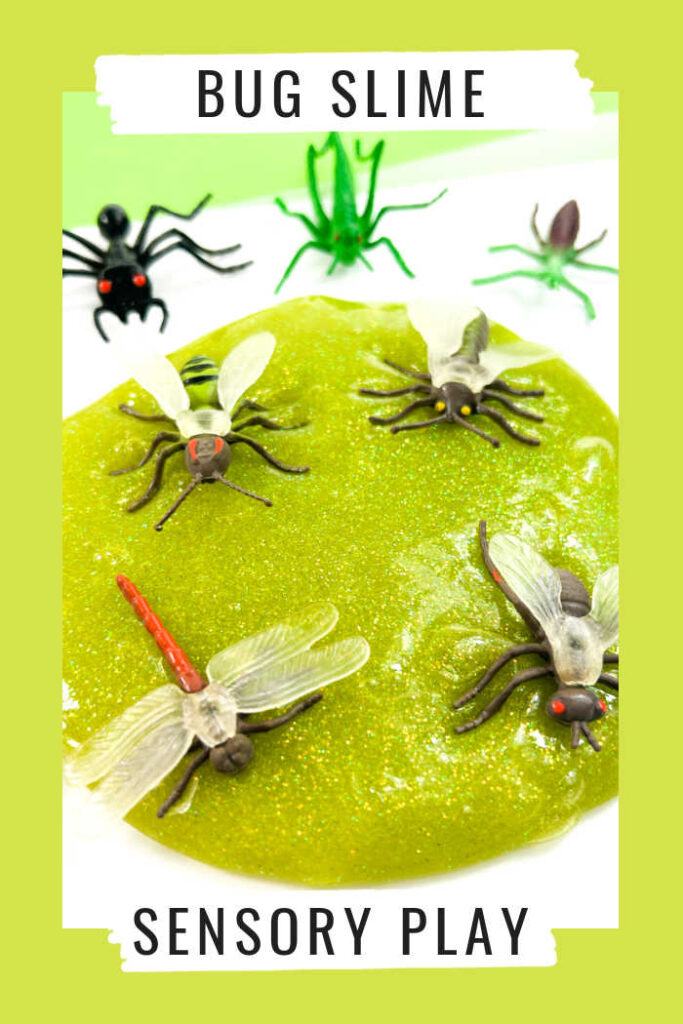
From vibrant colors to unique textures, this hands-on activity promises a delightful and memorable adventure into the captivating realm of bugs, all while enjoying the squishy fun of slime-making.
Get ready for a slimy bug-inspired journey that combines science and sensory play in a truly enthralling way!
Bug and Insect Books
When you’re done playing, snuggle up and enjoy these spine-tingling but adorable Bug Books for Kids with your own child.
I Like Bugs (Step-Into-Reading, Step 1)The Backyard Bug Book for Kids: Storybook, Insect Facts, and ActivitiesNational Geographic Readers: AntsHey, Little Ant
The Girl Who Drew Butterflies: How Maria Merian’s Art Changed ScienceThe Big Book of Bugs (The Big Book Series)It Fell from the SkyThe Honeybee
Or enjoy these wonderful Spider and Bug Books for Toddlers — it’s the perfect way to tie in to your insect activities!
Bugs vs Insects
Bugs are a type of insect. The term “bug” is often used informally to refer to any small, creepy-crawly creature, but in biological terms, insects are a specific class of invertebrates that belong to the arthropod phylum.
Insects are characterized by having six legs, three body segments (head, thorax and abdomen), antennae and often wings.
So, all bugs are insects, but not all insects are colloquially referred to as bugs.
Kids Explorer Kit & Bug Catching Kit Amber Dig Kit-Artificial Insect Resin, Excavate 6 Insects Specimens
Amber Dig Kit-Artificial Insect Resin, Excavate 6 Insects Specimens Kids Outdoor Science & Adventure Toy-Nature Exploring & Bug Catching Kit-Magnifying Glass, Binoculars, Compass, Camping & Hiking Gear
Kids Outdoor Science & Adventure Toy-Nature Exploring & Bug Catching Kit-Magnifying Glass, Binoculars, Compass, Camping & Hiking Gear LEGO Ideas The Insect Collection
LEGO Ideas The Insect Collection
There is a vast diversity of bugs, ranging from butterflies and bees, which are important pollinators, to beetles like ladybugs that help control pests in gardens.
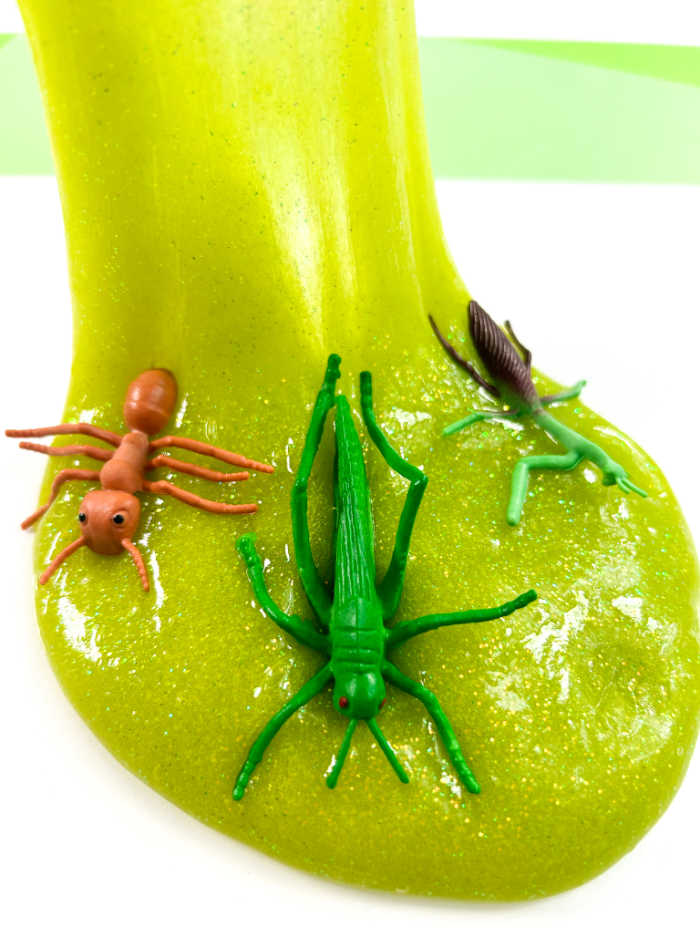
Additionally, ants and termites showcase the social behavior observed in some insect species, while dragonflies and grasshoppers exemplify remarkable flying abilities among bugs.
Bugs Without Wings
In the fascinating world of insects and arthropods, there exists a diverse array of wingless bugs. One familiar example is the ant, with its industrious colonies seldom featuring winged members.
Silverfish, small and silvery, navigate our living spaces without the aid of wings, thriving in damp environments. Centipedes, though not true insects but myriapods, are noteworthy for their numerous legs and lack of wings.
Insect Bug Toy Figures for Kids 60 Pcs Mini Insect Toys
60 Pcs Mini Insect Toys 73 Pack Plastic Fake Mini Bugs Set
73 Pack Plastic Fake Mini Bugs Set 148 Pieces Plastic Bugs
148 Pieces Plastic Bugs
Caterpillars, the larval form of butterflies and moths, gracefully move about without the burden of wings, relying instead on multiple pairs of prolegs. Ground beetles, too, often forsake wings or sport reduced versions.
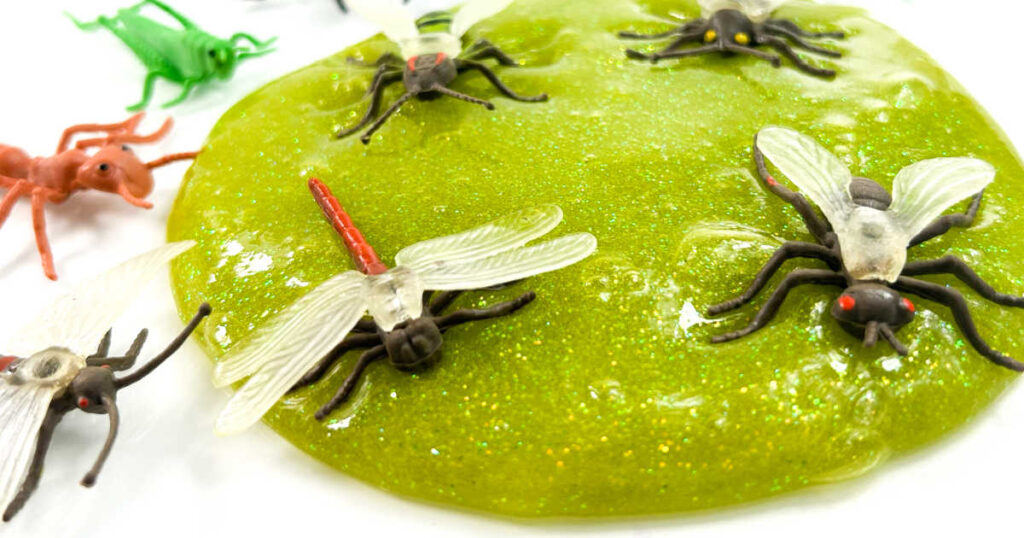
And while earwigs are generally recognized for their distinctive pincer-like appendages, some species opt for a wingless lifestyle. These wingless wonders contribute to the rich tapestry of the insect world, each adapted uniquely to its environment and lifestyle.
How to Play With Bug Slime
Playing with bug slime can be a delightfully sensory tactile and imaginative experience. Here are a few fun ways to play with bug slime:
Bug Exploration: Incorporate plastic bug toys into the slime and encourage your child to go on a bug hunt. They can pick out different bugs, observe them in the slime and create little bug scenarios.
Sensory Play: The unique texture of slime provides an excellent sensory experience. Let your child squish, stretch and mold the slime, exploring different sensations.
Create a Bug Habitat: Use the slime as a base for a bug habitat. Add small twigs, leaves or other natural elements to create a mini ecosystem for the plastic bugs.
Storytelling: Encourage creative storytelling by incorporating the bugs and slime into imaginative narratives. Your child can create stories about the adventures of the bugs in their slimy world.
The Fascinating Bug Book for Kids: 500 Startling Facts! Super Bug Encyclopedia: The Biggest, Fastest, Deadliest Creepy-Crawlers on the Planet
Super Bug Encyclopedia: The Biggest, Fastest, Deadliest Creepy-Crawlers on the Planet Bugs: A Stunning Pop-up Look at Insects, Spiders, and Other Creepy-Crawlies
Bugs: A Stunning Pop-up Look at Insects, Spiders, and Other Creepy-Crawlies Some Bugs (Classic Board Books)
Some Bugs (Classic Board Books)
Bug Prints: If the plastic bugs have interesting shapes on their undersides, your child can make prints in the slime by pressing them down. It’s a fun way to explore patterns and shapes.
Sorting and Counting: If you have various types of bug toys, use the slime activity for sorting and counting. It’s a playful way to introduce early math concepts.
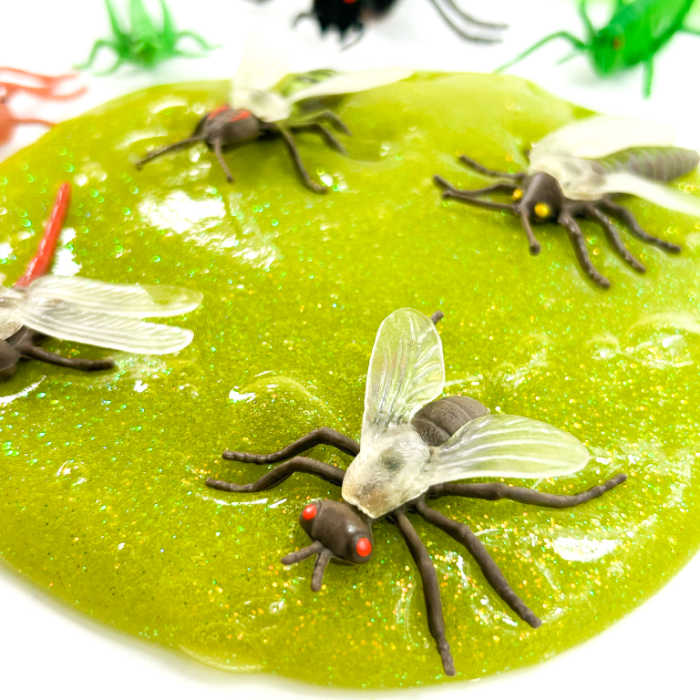
Remember to supervise younger children to ensure that the play remains safe and enjoyable. Always follow proper care and hygiene practices when handling slime.
Bug Slime Ingredients
- 1 (6oz.) bottle of green glitter glue
- ½ tbsp. Baking soda
- 1 tbsp. Contact solution
- Insect toys
- Mixing bowl
- Mixing spoon
- Plastic mat
How to Make Bug Slime
Begin by pouring the glue into a mixing bowl, then add the baking soda and stir thoroughly until well combined. Gradually pour in the contact solution, continuing to stir until the slime achieves a stretchy consistency.
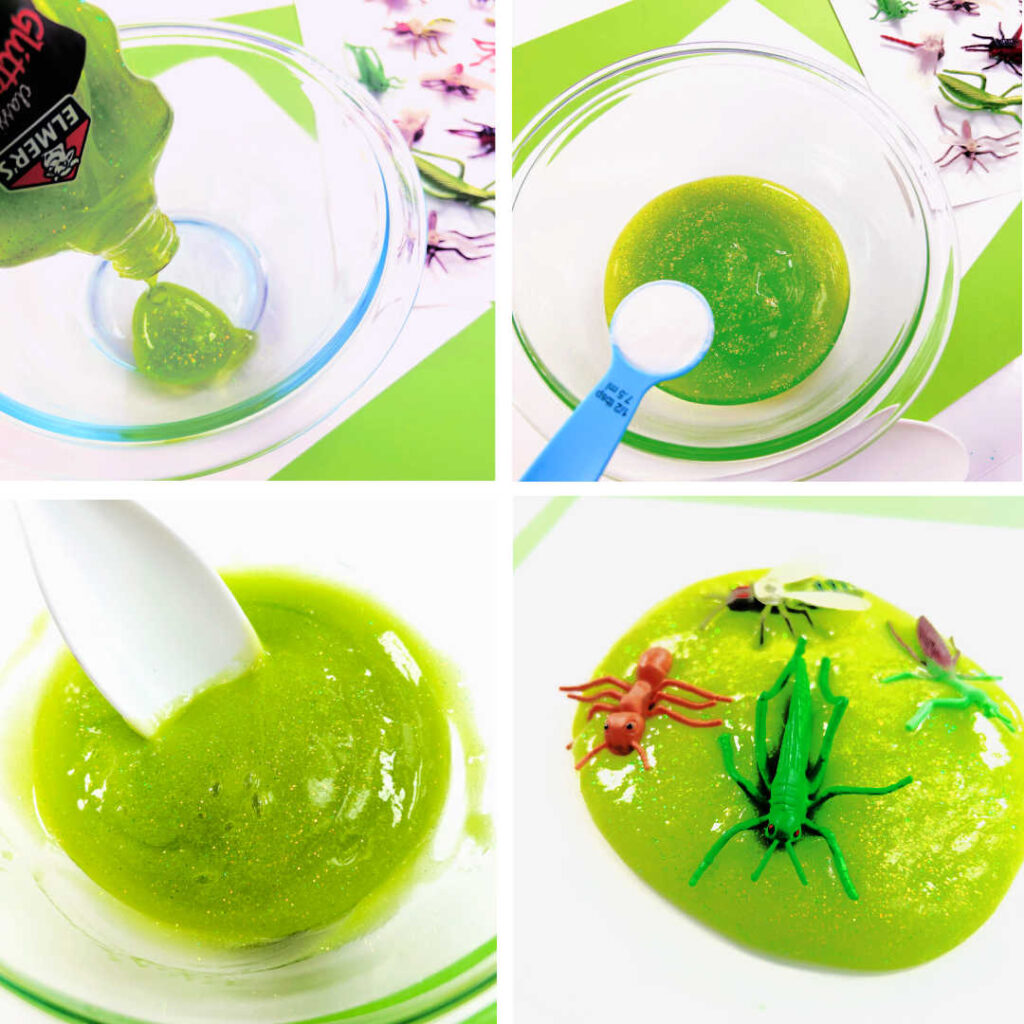
It’s important to note that the slime may feel sticky initially, and it might seem like there’s an excess of contact solution. However, by kneading the slime, it will reach the desired consistency. In this particular recipe, no extra solution was needed.
Once your slime reaches the desired texture, it’s ready for play. For a clean play area, use a plastic mat, and enhance the experience by adding insect toys to the slime.
After playtime, store the slime in an airtight container or jar. Enjoy the gooey, insect-filled fun!
Fun Bug Activities for Kids
This exciting collection of fun bug activities for kids is tailored to engage young minds and spark their curiosity about the fascinating realm of insects.
- Life Cycle of a Butterfly Paper Plate Craft
- Butterflies, Bugs and Blocks
- Butterfly Life Cycle Sensory Bin
- Bugs Number Recognition
- Butterfly Books for Children
- Digging for Bugs in the ‘Mud’
- Nonfiction Books about Bees for Kids
- Bugs Sensory Bin
- Adorable Love Bug Valentine Photo Holder
Join in the fun, explore and let the imaginative journey unfold with these bug-inspired activities designed to captivate and inspire children!
Printable Bug Activities
From colorful and educational worksheets to engaging games, these printable bug activities are perfect for young learners eager to explore the diverse and buzzing universe of bugs.
- A to Z Insect and Bug Movement Cards
- Bug Do a Dot Pack
- Cut, Sequence, Paste and Draw Bugs and Butterflies
- Bug Theme Numbers 1-20 Counting Activities
- Ladybugs Preschool Activities
- Bugs & Crawly Creatures Movement Cards
- Bug and Insect I Spy Board Game
- Ladybug Number Sense Activities
Spark their interest, encourage discovery and make learning about insects a delightful adventure with these printable activities. Let the exploration begin!
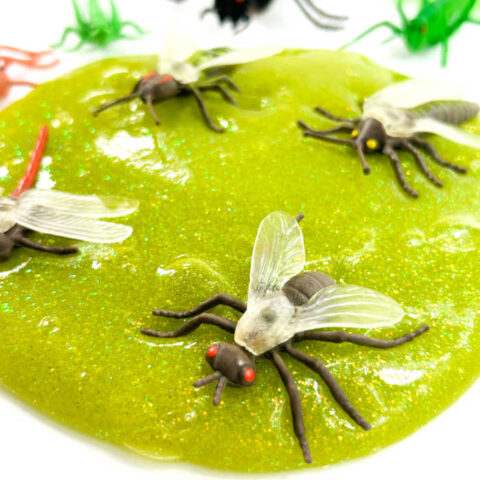
Bug Slime
Dive into the fascinating world of insects with an engaging and gooey twist – bug slime!
Materials
- 1 (6oz.) bottle of green glitter glue
- ½ tbsp. Baking soda
- 1 tbsp. Contact solution
- Insect toys
Tools
- Mixing bowl
- Mixing spoon
- Plastic mat
Instructions
- Begin by pouring the glue into a mixing bowl, then add the baking soda and stir thoroughly until well combined. Gradually pour in the contact solution, continuing to stir until the slime achieves a stretchy consistency.
- Once your slime reaches the desired texture, it's ready for play.
- For a clean play area, use a plastic mat, and enhance the experience by adding insect toys to the slime.
- After playtime, store the slime in an airtight container or jar. Enjoy the gooey, insect-filled fun!
Notes
It's important to note that the slime may feel sticky initially, and it might seem like there's an excess of contact solution. However, by kneading the slime, it will reach the desired consistency. In this particular recipe, no extra solution was needed.
Recommended Products
As an Amazon Associate and member of other affiliate programs, I earn from qualifying purchases.

